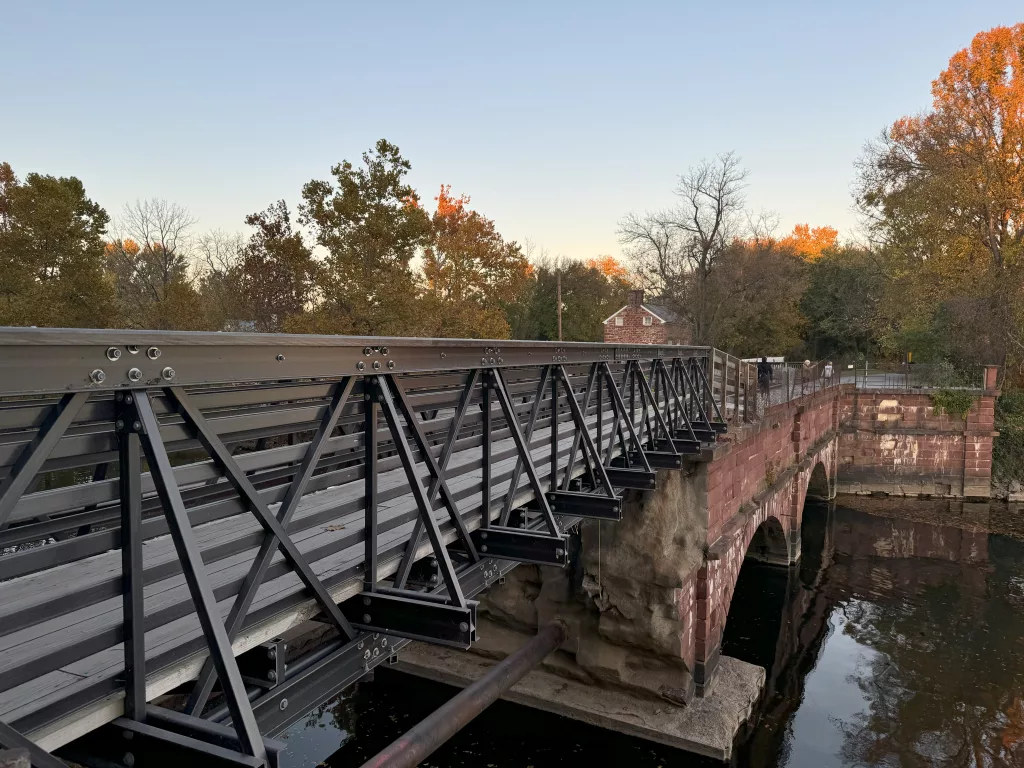Introduction
Last month, I had the privilege of visiting the C&O Canal National Historic Park, a treasure trove of American history that has preserved the story of our nation’s development through its iconic waterways. I arrived just before sunset at the Seneca Creek Aqueduct, where one of our innovative FRP trail bridges stands proudly.

Historical Significance of the C&O Canal
The Chesapeake and Ohio Canal, completed in the mid-19th century, served as a critical transportation route, facilitating commerce and travel between the Nation’s capital and the coal producing Appalachian region. Its construction marked a significant achievement in engineering, creating a vital lifeline for communities along the route, even though it never reached its initial goal of connecting the Chesapeake Bay to the Ohio River. To complete the canal, several aqueducts, locks, and even a tunnel had to be engineered and constructed. A path ran adjacent to the canal on which operators used mules to tow vessels through the canal. Today, the canal is not only a symbol of American ingenuity but also a beloved recreational area, attracting visitors who come to hike, bike, and experience its rich history. It has become one the most popular and well-known greenway trails in the country.

Arete Bridge at the Seneca Creek Aqueduct
When I arrived at the Seneca Creek Aqueduct, I was first struck by just how monumental an undertaking it must have been to construct a bridge for one waterway across another waterway. And this was just one of hundreds of engineering feats that came together to complete the C&O Canal. The second thing I noticed was how seamlessly our FRP trail bridge is integrated into this historical landscape. It sits along the tow path and spans a portion of the masonry aqueduct that has collapsed over the years. With its lightweight, corrosion-resistant materials, the bridge offers a modern solution to trail accessibility without compromising the aesthetic and historical integrity of the site. It provides a safe and durable crossing that will be maintenance free for years to come.

Compatibility with Historically Protected Trails
Visiting the C&O Canal Trail helped drive home for me, the importance of maintaining the character of historically significant trails. Our truss style bridges call to mind Pratt Truss structures dating to the time of the Canal’s construction. By adapting this time-tested design for modern FRP materials, we can meet site access challenges and decrease maintenance requirements. If you’re a trail builder or stakeholder looking for a crossing solution that can honor your trail’s historical significance, I invite you to explore our FRP trail bridges. Let’s work together to create solutions that respect our heritage while expanding accessibility and recreational opportunities.

